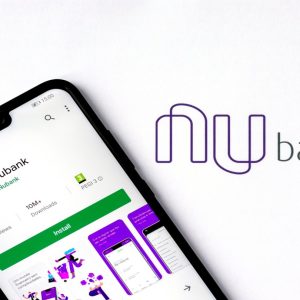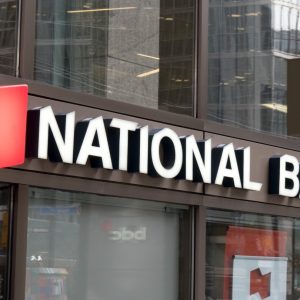
Fintech start-ups have received much attention over recent years – not least in how they’re designed. Boasting slick, accessible pages, filled with colour, the UX of many neobanks put their traditional counterparts to shame. Or they did, anyway.
Spurred on by competition from the new kids, many mainstream banks have invested heavily in design, both in how they structure apps and websites, and how they appear to the end user.
Lizzie Waymouth talks to Valérie Koplewicz, lead UX designer at Crédit Agricole, to learn how major banks think UX has shifted over the past few years, the challenges of dovetailing clear design in complex financial apps, and the importance of pressure from start-ups in encouraging change.
The first bank account I ever set up as an adult, I made an appointment, travelled to my local high street branch a few miles away, waded through endless paperwork and waited for my card to arrive in the post a week or so later.
In the middle of lockdown in 2020, I decided to register with a digital bank: I sent my details, verified my identity and had an account ready to use in minutes – without even changing out of my pyjamas.
The days of physical banking are over. Branches are closing: according to one survey by Which?, roughly 4,300 banks have shut down since 2015 in the UK, translating to a rate of roughly 50 per month. Along the way, people have come to expect 24/7 services at the touch of a button.
According to technology news website Verdict, 27% of adults in the UK had opened a digital-only bank account as of January 2021, a considerable increase on 9% two years ago.
“In 2021, who doesn’t have access to online banking services?” asks Valérie Koplewicz, lead UX designer at Crédit Agricole. Not that traditional banks can simply expect their customers to seamlessly swap from a physical branch to a digital account.
With the rise of modern digital banking, old-fashioned insitutions are under increasing pressure to provide the same offering. It’s not just about providing online services, but ensuring they are user-friendly, accessible and innovative.
If anyone understands this, it’s Koplewicz. She has been working in UX design in France for more than ten years and has served as a consultant for traditional banks and insurance companies looking for advice on how to improve their user experience.
“It’s definitely a fact that banks are thinking about UX, and it’s not something new,” she says. However, Koplewicz acknowledges that their needs are becoming more complex: “Customers are unique, diverse and have extremely [varied] expectations; therefore, it is no longer enough to follow usability standards by the book.
“Today, it is essential to rethink design in a multi-contextual way, taking into account many different kinds of usages.”
As Koplewicz explains how the way her company thinks about UX has changed in recent years, she cites the example of when she was asked to improve a given screen with her UX expertise, when these days teams are thinking about “journeys” and “end-to-end user flows” instead.
“Our customers must be able to interact with the bank whatever the channel, to pause a task and pick it up later, to start something online and potentially finish it together with their advisor at the bank… or vice versa. The user experience must be delightful, whatever path the user chooses,” she adds.
Just a click away
These changes are being accelerated by the rise of online-only banks offering fast, contactless services. With banks such as N26, Revolut and Wise claiming it takes a few minutes to set up an account, customers are expecting more from their banks than ever before.
“Neobanks can represent a threat for traditional banks,” Koplewicz says, pointing out that N26 claims that it’s possible to open an online account in only eight minutes. “The bank charges are usually very low or inexistent and the design is often very sleek and even fun,” she adds.
In May 2020, UX consultancy Built for Mars investigated the amount of time it takes to open an account with 12 UK banks – both well-established high street names and challenger banks.
The conclusions were startling. Built for Mars found that neobanks were considerably faster than their traditional counterparts in almost all cases.
Monzo and Starling Bank topped the list at two working days, with Revolut not far behind on three. At the other end of the spectrum, it took 22 working days to open an account with Nationwide and a shocking 36 for HSBC.
Even so, conventional banks weren’t always slower: Barclays only took two days and Lloyds took three.
Similarly, in terms of the number of clicks it took to open an account, Revolut took 24, Starling 38 and Monzo 45, while HBSC took 99 clicks and First Direct 120.
What’s more, Barclays was the only traditional bank surveyed that enabled users to open an account via its app – something that neobanks have been pioneering for a while.
Similarly, many conventional banks, such as Santander, HSBC and Lloyds, still don’t allow customers to digitally verify their identity when opening an account.
Koplewicz acknowledges that it can be more difficult for conventional banks to introduce innovative digital solutions. “In the world of UX, we often say that producing simple design is very complicated,” she explains.
“This is often true [for] traditional banks [that] rely on legacy information systems. Technical aspects and security can be perceived as a constraint to develop innovative journeys.”
With this in mind, it’s no surprise that more and more people are turning to online-only banks. According to a survey conducted by consumer research company Attest, 45% of UK consumers are considering opening a digital bank account in the next six months, and 54% said this was because the accounts were easy to use.
The pandemic has accelerated this trend – Attest found that 37% of people who only use a digital-only bank signed up since March 2020, and 41% of neobank customers increased their usage during the pandemic.
However, these changes are also driving conventional banks to increase their focus on UX and expand their digital banking offering: “During the pandemic lockdown, our customers could no longer visit their [branches] to carry out banking transactions,” Koplewicz says.
“The impact was immediate and we had no other choice but to massively accelerate our digitalisation efforts. To give one figure, the UX design team grew from 15 to 40 people in two months.”
100% human, 100% digital
Sleek, simple design; the ability for people to access all their accounts, including those from other banks, displayed in an easy-to-understand pie chart; instant messaging with advisors; budget tracking and estimations; digital authentication and face recognition – these are all features of Crédit Agricole’s Ma Banque app.
Alongside this, the bank’s Paiement Mobile app allows customers to make faster online payments, contactless payments in person and transactions to family and friends.
These innovative platforms are typical of a new trend. Established banks are working hard to make their platforms accessible and offer users everything they could require from a physical branch.
Koplewicz acknowledges that these developments have been driven in part by the need to compete with neobanks: “The pressure is there – there is no question about it. These innovative start-ups have pushed traditional banks to get up to speed and offer the same level of service.”
Koplewicz explains that it previously took 48 hours to declare a new recipient before transferring money. “The process was safe, but not optimised for small, everyday transactions. We now propose instant payment to cover this need.”
However, she is keen to point out that this pressure is not necessarily a bad thing. “Personally, I don’t want to see neobanks [as] a direct threat but rather as a positive influence, pushing banks to innovate further. We need to pick up on the good ideas while continuing to communicate to our customers about the security and expertise we offer.”
Koplewicz also notes that, while neobanks may offer faster service, there are other areas where traditional banks will retain an edge.
“When customers need security, advice or when asking for a house mortgage, a large majority still prefer traditional banks,” she says. She cites the news, from earlier this year, that N26 was sentenced to pay a €4.25m fine by the German financial regulator due to weak money laundering controls.
“Neobanks are proposing innovative solutions, changing established conventions and creating new habits. They are attracting primarily the 18 to 25-year-old range.
But who knows what will happen when these customers will want to have different types of accounts, take a mortgage or save for their retirement?”
Even if the physical branch is a thing of the past, Koplewicz stresses that customers still expect a personal touch, and some may still prefer to communicate with a person rather than an app.
She explains that the company’s core principle is to be “100% human, 100% digital”. This means “digitalising user journeys to give full autonomy and freedom to the users who prefer self-care, while always providing human guidance and support when needed”.
Looking ahead, Koplewicz is excited about what the future holds. “How can we secure our users’ money but also their data and sensitive documents? How can biometry play a role in giving quick yet safe access to bank statements?
“How could we provide advice around the clock thanks to chatbot technology? What about deploying at scale contactless payment on smartphones?” she asks.
“One of my favourites is banking prediction – to help our customers better forecast their expenses and take the lead on their future. That’s the state of mind of Generation Z: they want to understand, think and act by themselves. We need to answer that need.”
This article originally appeared in Future Banking winter 2021.






